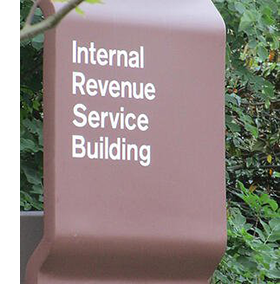Over the past few weeks, we have received dozens of calls from clients, who have received tax notices from both the Internal Revenue Service and the State of Ohio.
IRS grants rollover relief for RMDs waived under the CARES Act
Zinner & Co. Brett W. Neate , Taxes - Planning, Rules and Returns , Retirement Planning & IRAs , IRS , cash flow , Zinner & Co.The Internal Revenue Service recently announced anyone, who already took a required minimum distribution (RMD) in 2020 from certain retirement accounts, now has the opportunity to roll those funds back into a retirement account following the CARES Act RMD waiver for 2020.
This 60-day rollover period for any RMDs already taken this year has been extended to Aug. 31, 2020, in order to give taxpayers time to take advantage of this opportunity.
IRS Announces 2021 Contribution and Expense Limits for HSAs and HDHPs
Zinner & Co. Tax Team HSA , IRS , HDHPIn late June, the Internal Revenue Service issued Revenue Procedure 2020-32, in which they set Health Savings Account contribution limits for calendar year 2021, along with minimum deductible and maximum out-of-pocket expenses for the High Deductible Health Plans, with which HSAs are paired.
What you need to know about the economic impact payments
Zinner & Co. Tax Team Taxes - Planning, Rules and Returns , Taxes - Individual , IRS , Economic Impact PaymentsThe Treasury Department and the Internal Revenue Service recently announced the distribution of economic impact payments will begin within the next three weeks, and will be distributed automatically, with no action required by most people.
However, some seniors and others who typically do not file returns, will need to submit a simple tax return to receive the stimulus payment.
Families First Coronavirus Response Act
Zinner & Co. Tax Team IRS , Coronavirus , Treasury Department , COVID-19 , Federal Assistance , Families First Coronavirus Response Act , Employee LeaveThe U.S. Treasury Department, Internal Revenue Service, and the U.S. Department of Labor announced small and midsize employers can begin taking advantage of two new refundable payroll tax credits, designed to immediately and fully reimburse them, dollar-for-dollar, for the cost of providing Coronavirus-related leave to their employees.
IRS Deferring Tax Payments by 90 Days
Zinner & Co. Tax Department tax services , Taxes - Corporate & Business , Taxes - Planning, Rules and Returns , Taxes - Individual , tax , taxes , IRS , Coronavirus , Treasury Department , Steven Mnuchin , COVID-19 , Deferring Tax PaymentsTax Deadline Remains April 15
While taxpayers still have to file their taxes by April 15, 2020, the deadline to pay taxes has been extended by 90 days until July 15, 2020.
During a March 17th press conference regarding the coronavirus pandemic, U.S. Treasury Secretary Steven Mnuchin announced taxpayers will have an additional 90-days through July 15, 2020 to pay their taxes, penalty-free and interest-free.
He said individual taxpayers can defer up to $1 million of tax payments and corporations up to $10 million in tax payments.
IRS Announces Inflation-Adjusted Standard Deduction Amounts for 2020
Zinner & Co. Tax Team Taxes - Individual , deductions , income tax , IRSThe IRS issued its annual inflation adjustments for key tax items for the tax year 2020. Among them are new amounts for standard deductions.
For the tax year 2020, the standard deduction for a married couple filing jointly will be raised from $24,400 to 24,800. For single taxpayers and married couples filing separately, the standard deduction will be raised from $12,200 to 12,400. For heads of households, the standard deduction will be $18, 650.
Margin tax rates will change as follows:
IRS Announces New Retirement Plan Limits for 2020
Zinner & Co. Tax Team Taxes - Individual , Retirement Planning & IRAs , IRSThe IRS has released the retirement contribution limits for the 2020 tax year. The new limits are adjusted based on increases in the cost of living.
States Fail to Overturn SALT Deduction Caps
Zinner & Co. Tax Team Taxes - Individual , taxes , IRS , Tax Cuts and Jobs Act of 2017 , SALT
In a blow to several high-tax states, a federal judge has upheld a key provision of the Tax Cuts and Jobs Act (TCJA), the State and Local Tax (SALT) deduction cap.
Under the TCJA, congress placed a cap on the amount taxpayers could claim on their Schedule A for state and local taxes.
The IRS has unveiled the new, redesigned Form W-4 for the tax year 2020. This new form eliminates many of the complex tables used in previous versions and includes many enhancements from the earlier draft version.
About Us

Since 1938, Zinner has counseled individuals and businesses from start-up to succession. At Zinner, we strive to ensure we understand your business and recognize threats that could impact your financial situation.
Recent Blog Posts
Categories
- 1031 Exchange (2)
- 401k (2)
- 529 plan (4)
- ABLE Act (1)
- account systems (3)
- accounting (8)
- Affordable Care Act (8)
- alimony (2)
- American Rescue Plan Act (1)
- Ask the Expert (5)
- Audit and Assurance Department (13)
- audits (8)
- Bank Secrecy Act (1)
- banks (1)
- Barbara Theofilos (6)
- Beneficial Ownership Information (1)
- Bitcoin (1)
- block chain (2)
- BOI (3)
- Bookkeeping (1)
- Brett W. Neate (28)
- budgets (1)
- Bureau of Worker's Compensation (12)
- Business - Management, Issues & Concerns (50)
- business income deduction (3)
- business succession (7)
- business travel expense (3)
- business valuation (5)
- capital gains (2)
- careers (7)
- cash flow (2)
- Child Tax Credit (2)
- Chris Valponi (8)
- City of Cleveland (1)
- Cleveland COVID-19 Rapid Response Fund (1)
- Cleveland Rape Crisis Center (2)
- college (3)
- Community (24)
- Compliance (1)
- Coronavirus (24)
- Corporate Transparency Act (1)
- COVID-19 (30)
- Credit card fraud (5)
- credit reporting (2)
- cryptocurrency (2)
- CTA (2)
- cybersecurity (16)
- dead (1)
- DeAnna Alger (6)
- death (2)
- debt (4)
- deductions (14)
- Deferring Tax Payments (4)
- Department of Job and Family Services (2)
- depreciation (1)
- Digital Tax Payment (1)
- divorce (4)
- DOMA (3)
- Economic Impact Payments (2)
- Economic Injury Disaster Loan (4)
- education (8)
- EIDL (1)
- electronic filing (4)
- Electronic Tax Payments (2)
- Emergency Working Capital Program (1)
- employee benefit plan auditor (1)
- Employee Leave (2)
- Employee or Independent Contractor (6)
- Employee Retention Credit (3)
- employment (2)
- ERC (3)
- Eric James (8)
- Estates, Gifts & Trusts (48)
- expenses (5)
- Families First Coronavirus Response Act (2)
- FASB (1)
- FBAR (1)
- FDIC coverage (1)
- Federal Assistance (4)
- filing (3)
- financial planning (8)
- Financial Planning - College (9)
- financing (3)
- Firm news (119)
- first responders (1)
- FMLA (1)
- foreign assets (3)
- fraud (38)
- FSA (1)
- fundraising (9)
- Gabe Adler (1)
- gift tax (5)
- HDHP (2)
- health care (3)
- home (2)
- home office (1)
- Howard Kass (2)
- HRA (1)
- HSA (5)
- identity theft (32)
- income (1)
- income tax (57)
- independent contractor (1)
- Inflation (1)
- Insurance (7)
- internal control (4)
- international (2)
- Intuit (1)
- investments (4)
- IRS (88)
- jobs (5)
- John Husted (1)
- K-1 (1)
- Laura Haines (3)
- Layoff (2)
- Layoffs (1)
- leadership (3)
- lease accounting standards (1)
- life insurance (1)
- LLC (3)
- Loans (2)
- longevity income annuities (1)
- Lorenzo's Dog Training (1)
- Magic of Lights (1)
- management advisory (3)
- manufacturing (2)
- Matt Szydlowski (3)
- medical (7)
- Medicare (2)
- mergers and acquisitions (1)
- Mike DeWine (2)
- Millennial Concepts (2)
- minimum wage (1)
- NAIOP (1)
- National Defense Act (1)
- non-profit reporting (10)
- non-profits (38)
- not-for-profit (26)
- ODJFS (1)
- office (1)
- ohio (13)
- Ohio business owners (18)
- Ohio Department of Jobs and Family Services (3)
- Ohio Department of Taxation (3)
- Ohio Incumbent Workforce Training Voucher Program (1)
- Online Tax Payment (3)
- Operations (2)
- OPERS (1)
- owners of foreign entities (1)
- partnerships (5)
- passwords (1)
- Paycheck Protection Program (9)
- payroll (8)
- penalties (3)
- pension (2)
- personal finance (2)
- planning (4)
- ppp (7)
- Productivity (5)
- Qualified Business Income (1)
- quickbooks (10)
- real estate (14)
- record retention (2)
- records (2)
- Reporting (1)
- Republican National Convention (1)
- Retirement Planning & IRAs (53)
- Richard Huszai, CPA (5)
- RITA (1)
- Robin Baum (6)
- RRF (1)
- S Corporation (1)
- SALT (8)
- SBA (8)
- scams (12)
- SECURE 2.0 Act (1)
- security (6)
- SharedWorks (1)
- Shutdown (3)
- Silver Linings (9)
- simplified employee pension (1)
- Small Business (5)
- SMB (12)
- Social Media (1)
- social security (4)
- Speaker Series (2)
- spouse (1)
- start ups (8)
- Stay at Home Order (3)
- Steven Mnuchin (1)
- Sue Krantz (6)
- SVOG (1)
- tangible property (1)
- tax (27)
- tax avoidance (12)
- Tax Credit (7)
- Tax Cuts and Jobs Act of 2017 (31)
- Tax Exempt (1)
- Tax Holiday (1)
- Tax Interns (2)
- tax services (28)
- taxes (45)
- Taxes - Corporate & Business (104)
- Taxes - Individual (117)
- Taxes - Planning, Rules and Returns (188)
- TechCred (1)
- technology (7)
- The CARES Act (6)
- The SOURCE (1)
- tiag (3)
- transaction advisory (2)
- Treasury Department (5)
- tuition (3)
- U.S. Department of the Treasury (1)
- U.S. Small Business Administration (6)
- Unclaimed Funds (1)
- Unemployment Benefits (4)
- withdrawls (2)
- withholding (6)
- Workers Comp Billing Changes (1)
- Zinner & Co. (32)
- Zinner News (30)






